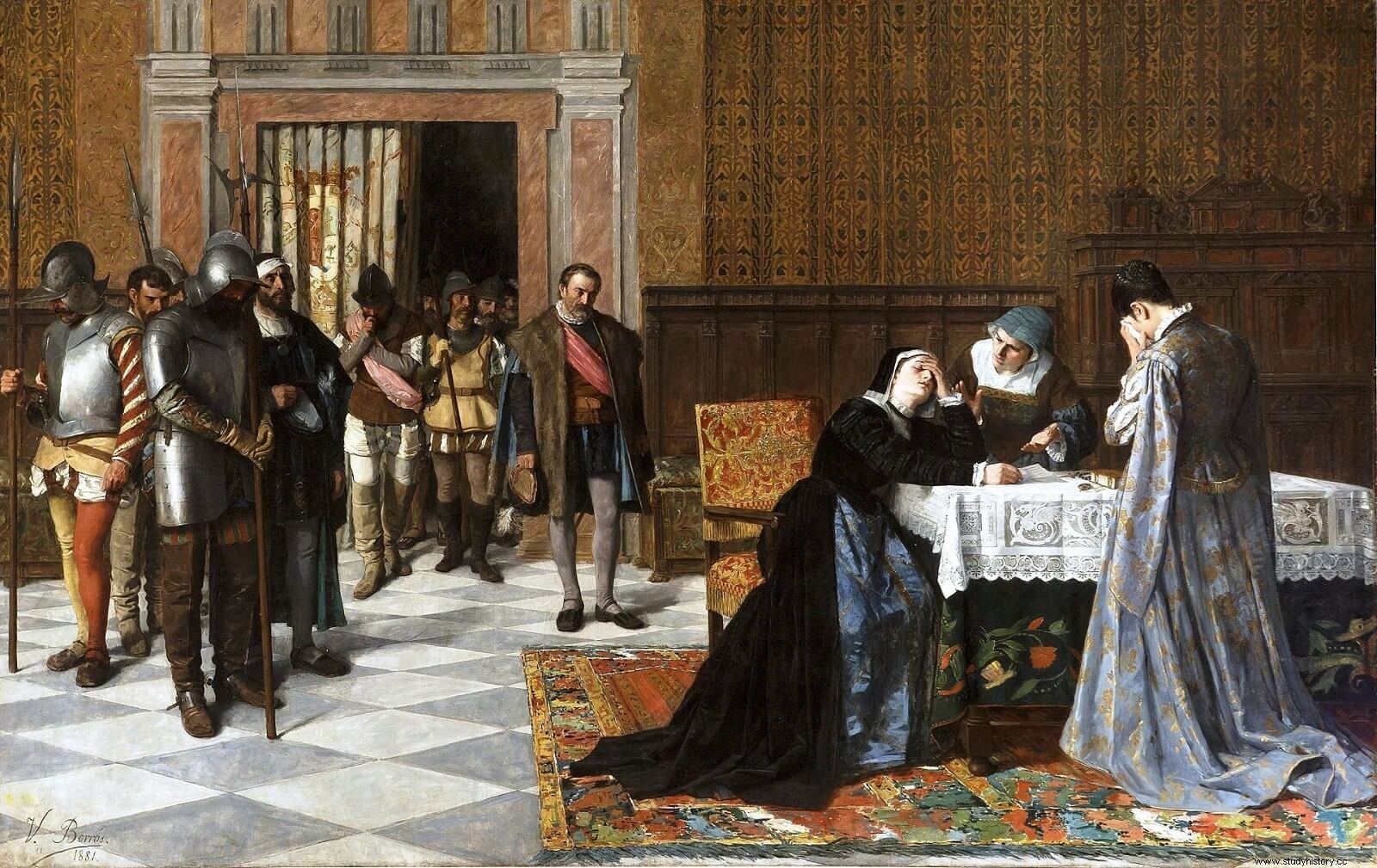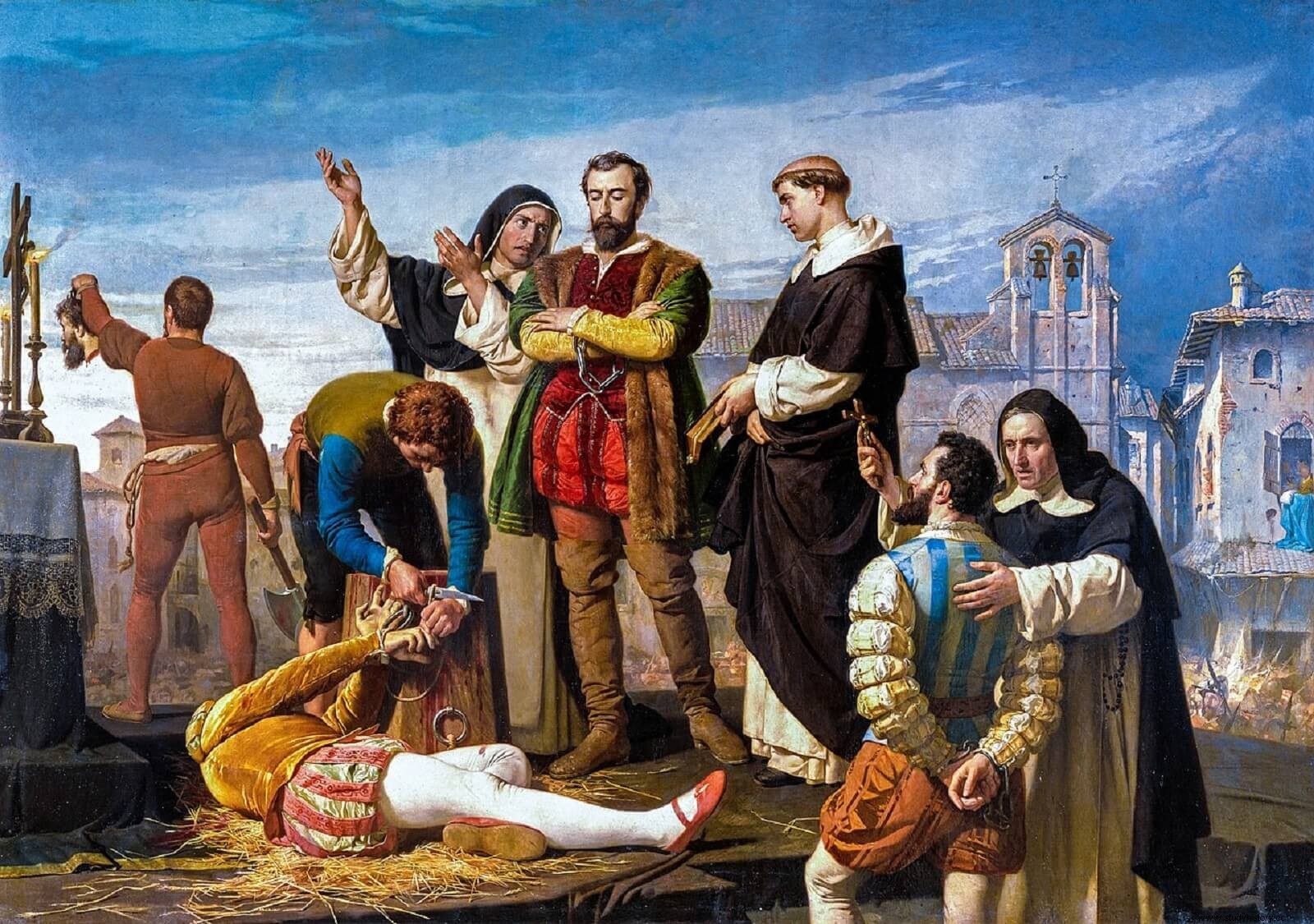
In the Spanish collective imagination it is well established that the Battle of Villalar , which occurred on April 23, 1521, was the end of the War of the Communities, which pitted the rebels of the cities of Castile against Carlos V. But was the battle of Villalar really the end of the war? The truth is that the battles between royalists and comuneros continued, and one of the most stubborn rebel captains was none other than the wife of the comunero leader Juan de Padilla:María Pacheco , leader of the communal resistance in Toledo. María López de Mendoza y Pacheco (Granada, 1497-Oporto, 1531) is remembered for being the wife of the commoner general Juan de Padilla (Toledo, 1490-Villalar, 1521), but her merits go far beyond her status. of a rebel's wife.
Nicknamed by the Castilian people as the "brick of fire" and the "Lioness of Castile", she became the main leader of the commoner side in the fight against Charles V during the final stages of the War of the Communities, entrenching themselves in the city of Toledo, the last to fall into royalist hands, for six months, until October 25, when the so-called Armistice of Sisla took place. , to lead a new uprising, very brief this time, on February 3, 1522.
María Pacheco before the War the Communities
Her lineage was impeccable:daughter of Íñigo López de Mendoza y Quiñones, 1st Marquis of Mondéjar and 2nd Count of Tendilla, and Francisca Pacheco, daughter of Juan Pacheco, I Marquis of Villena. Its origins, therefore, were rooted with the most granular of the Castilian nobility. Curiously, she has traditionally been known by her mother's surname, Pacheco, instead of her father's, López de Mendoza. Her birth took place in the recently conquered Granada in an uncertain year, probably 1495 or 1496, where her father, the Count of Tendilla, held the position of perpetual mayor in the Alhambra by order of the Catholic Monarchs.
Together with her siblings, she received a careful education in the purest humanist style:mathematics, literature, history... Before turning twenty, María spoke Latin and Greek fluently, and she was versed in mathematics, poetry, history and the knowledge of the Holy Scriptures.
In 1515 María married Juan de Padilla , also a nobleman with whom, despite being of lower rank, her father, the Count of Tendilla, ardently wanted to marry her with the aim of strengthening the ties between the López de Mendoza family and the Padilla family of Toledo. This was the record of the same hand of Don Íñigo:"I swear to God that in all my life I did a day as much as I wanted or that I was happier than having thrown this girl into the hands of whoever is there", writing in another missive, regarding the dowry that accompanied Doña María:“Three hundred thousand of income they took me with Doña María, and by God, sir, I have not misused them, I have never seen more honest people than those gentlemen , and Juan de Padilla is a good and sane man”. According to the letters of Don Íñigo López de Mendoza, it seems that he wanted nothing more than to get rid of his daughter María as soon as possible, and it also seems that, at that time, nothing made the Count of Tendilla think that his daughter's husband could target the rebellion against the king.
In February 1515 the couple left Granada for Porcuna, in Jaen lands, where Juan's uncle, at the time Commander of the Order of Calatrava, gave them some possessions. While there, the two main supporters of the marriage died:the Count of Tendilla, Doña María's father, and the Commander of the Order of Calatrava, Juan's uncle. In addition, at the worst moment, since María had become pregnant, and in an advanced state of pregnancy, the couple decided to go to Granada to give birth, the child finally being born on the way according to Doña María's brother, Don Luis Hurtado from Mendoza.
Later, in 1517 or 1518, the couple moved to Toledo , a city to which both spouses would dedicate most of their efforts, and which, together with a disagreement due to Doña María's dowry, had caused the estrangement between the Mendozas and the Padillas, a lineage that María would be proud of since her marriage. belong.
The policies of Carlos I
Given the convulsive situation generated in Castile since 1517 due to the consequences of the irregular accession to the Castilian throne of Prince Charles of Ghent –being a minor, and while Queen Juana was still alive–, added to the subsequent unpopular policies of the Flemish monarch, who carried out a systematic change of high-ranking Castilian officials for Flemish ones, the Padilla couple became significant as an icon of the community faction. The lineage of the Padillas, enthusiastic Fernandinos, had been extremely upset with the accession to the throne of Ghent, but it would be the Toledo branch of the family specifically, to which María now belonged, the most affected by the changes, putting the drop What filled the camel's back was the appointment as archbishop of Toledo, primate of Spain, of the Flemish nobleman, personal friend of King Charles, Guillermo de Croy.
Maria herself, along with her husband and the entire city of Toledo, was outraged, leading her to take an active role in the impending war against supporters of Charles I Humanists like Luis Vives and Pedro Mártir de Anglería they recorded the role played by Doña María Pacheco in the rebellion against the king. Mártir de Anglería would go further by charging Doña María with the blame for Padilla's actions. According to the humanist, Juan de Padilla was unskillful and manageable for other wills, especially for that of her wife, Doña María Pacheco, of whom "they say that she is a woman of lofty thoughts and her husband's husband." It seems more that the intention of these words was to make fun of Padilla than to attack María Pacheco.
Thus, the protests began in Toledo due to the long stay of Carlos I in the territories of the Crown of Aragon, and in November 1519 the city of the Tagus turned to the other Castilian cities with the complaint that the king “in the kingdoms of Aragon has stopped a lot and in these kingdoms of Castile he has lived little […] because the damage touches all of us, let us all get together to think about the remedy”. When on his return, at the beginning of 1520, Carlos I summoned Cortes in Galicia , the city of Toledo ended up exploding:the new monarch, according to Toledo, marginalized the imperial city from power.
The War of the Communities
In 1520, the revolt finally broke out. After the events of the Cortes de Santiago between March and April of that year, in Toledo, at the end of Holy Week, a series of riots and disorders took place that on April 16 broke out into open rebellion; the corregidor, supposedly frightened by the city's mob, did whatever the rebels asked, taking away the corregidor's rod to return it later "by the Community of Toledo." Juan de Padilla and the other aldermen would not go to the Cortes:the Community of Toledo declared itself in rebellion.
It is significant that Gutierre López de Padilla, brother of Juan and loyal to the king, wrote a letter not only to him, but also to María Pacheco, asking them to leave the Community . But it was already late. Juan de Padilla, with the support and acquiescence of María Pacheco, followed the orders of the rebels. In July 1520 the Santa Junta de Ávila was formed. , where “Captain General Juan de Padilla was appointed in the town hall.”
While Padilla led the communal forces, María governed the Community of Toledo. After the arrival of Antonio de Acuña , bishop and community member, to Toledo, the command was shared between them. Despite the victories obtained by the rebel troops against the royalists in sieges such as that of Torrelobatón , between February 21 and 25, 1521, the battle of Villalar, on April 23 of that year, decisively decanted the confrontation between the Communities and the king, which, on the other hand, did not end with the initiative of María Pacheco, who, despite the community defeat in Villalar and the execution of her own husband, did not resign herself or go to the royal pardon, but led the resistance of the city of Toledo against the royalist troops for nine months, reaching put these in serious trouble.

María Pacheco resists after Villalar's defeat
In addition to appointing his own captains, obtaining artillery for the fight, and implementing the payment of contributions to sustain the defense, Pacheco attended the skirmishes and combats between the Toledo militias and the besieging troops. During the hardships of the siege, the intervention of María Pacheco would be decisive in calming things down when disputes broke out between supporters of resistance and surrender, as witnessed by the chronicler Pedro de Alcocer . Finally, on October 25, an armistice of Sisla was agreed upon and signed, which provided acceptable surrender conditions for the besieged, and finally the troops of Carlos I entered the city's fortress.
Pacheco's firmness earned him the epithets of “valiant woman” and “last community member” . When the ephemeral San Blas revolt broke out on February 3, 1522 , her popularity among Toledans earned her the death sentence, which would never be commuted, but María managed to escape to Portugal with a group of faithful, escaping the persecution of her enemies. There, due to her refusal to renounce the community cause, she was excluded from the general pardon granted by Carlos I to the rebels.
Pacheco died in Porto in 1531, still in rebellion against the king, and her remains could not rest in Villalar together with those of her husband, Juan de Padilla, according to her wish. One of her younger brothers, Diego Hurtado de Mendoza , the renowned poet, chronicler and ambassador of Carlos I, to whom he remained loyal, visited her shortly before he died and composed her epitaph, which concludes:“Spain will tell you my quality / That Spain never denies the truth.”
